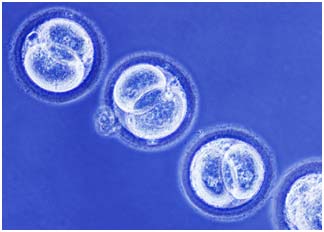Is there a state between life and death?
There may be a state at the boundary of life and death! The author of a study has suggested that certain groups of organisms, tissues and cells can survive in a state similar to oversleeping.
"We think that the intermediate state between life and death can be best identified as 'resting life'," said Dr. Rene Severijnen, a pediatric surgeon at Radboud University Medical Center in Ha. Lan, said. Together with Dr. Ger Bongaerts, Rene suggested that microorganisms are stored in a low temperature glycerol mixture and that stem cells stored in liquid nitrogen can exist in this intermediate state.
Bongaerts further hypothesizes that the bacteria that grow in an extremely salty or extremely sweet mixture, for example in honey jars, may also tend to fall into that kind of suspended life. Relatively low concentrations of water outside the bacterial cells have created osmotic pressure, causing water from their bodies to flow backwards, leaving the bacteria to wither.
A better example is that some marine shrimp species may fall into a state called cryptobiosis before sudden changes in environmental conditions, such as freezing or drought. These shrimp eggs are dried by the sun on evaporation surfaces filled with salt.
"But when released into the water tank, they give up this state," Bongaerts said. "In fact, the cryptobiosis life form is also a 'resting life' type."
What about embryonic stem cells?
 The researchers applied their hypothesis to both human embryonic stem cells, often separated from excess embryos during in vitro fertilization. They argue that although these stem cells' lives are not considered independent, the isolation of them for medical purposes has prevented these cells from falling into real death and "continue." life in the original way ".
The researchers applied their hypothesis to both human embryonic stem cells, often separated from excess embryos during in vitro fertilization. They argue that although these stem cells' lives are not considered independent, the isolation of them for medical purposes has prevented these cells from falling into real death and "continue." life in the original way ".
As a result, these cells should be better used in research, rather than discarded.
Two professors at Columbia University, Donald Landry and Howard Zucker, also doubt the traditional notion: life and death. In a recent article in Clinical Investigation, they showed that excess embryos during IVF cannot even form a fetus, but they may contain isolated living cells. save other lives.
Landry and Zucker expect future regulations to consider organ donation, when the living organs are removed from the bodies where the brain and body have stopped working. People can die, but the organs are not isolated
Did atoms die?
In addition to the debate about life and death, Bongaerts and Severijnen point out that atoms, bricks of all life forms, normally do not die at all."The death of an atom means that matter is converted into energy , " Bongaerts said. "This happens in the explosion of a thermonuclear bomb".
Severijnen added that although the body's growth, metabolism and other processes stop as soon as people die, "but the degradation process continues and may even increase."
And finally, he said, all complex compounds decompose back to smaller components, such as water, CO2 and NH 3 . These compounds become fuel for other organisms, and never die.
T. An
- The mystery of life after death: There is no heaven, only infinite sadness and darkness
- Found the gene still active after our bodies die
- Revealing the state of people when they are close to death
- The top American doctor believes in
- An American scientist asserts that
- Learn new definitions of death
- Research data on life after death
- The mystery of life after death: The woman sees the future and reincarnates
- The phenomenon of 'seeing heaven' through the words of the dead goes back to life
- Too happy can also take life
- 'Rise' of death in Siberia threatens planet life
- Read the mind of the dead
 Why do potatoes have eyes?
Why do potatoes have eyes? 'Tragedy' the world's largest carnivorous life: Death becomes ... public toilet
'Tragedy' the world's largest carnivorous life: Death becomes ... public toilet Tomatoes were once considered 'poisonous' for 200 years
Tomatoes were once considered 'poisonous' for 200 years Detecting microscopic parasites on human face
Detecting microscopic parasites on human face